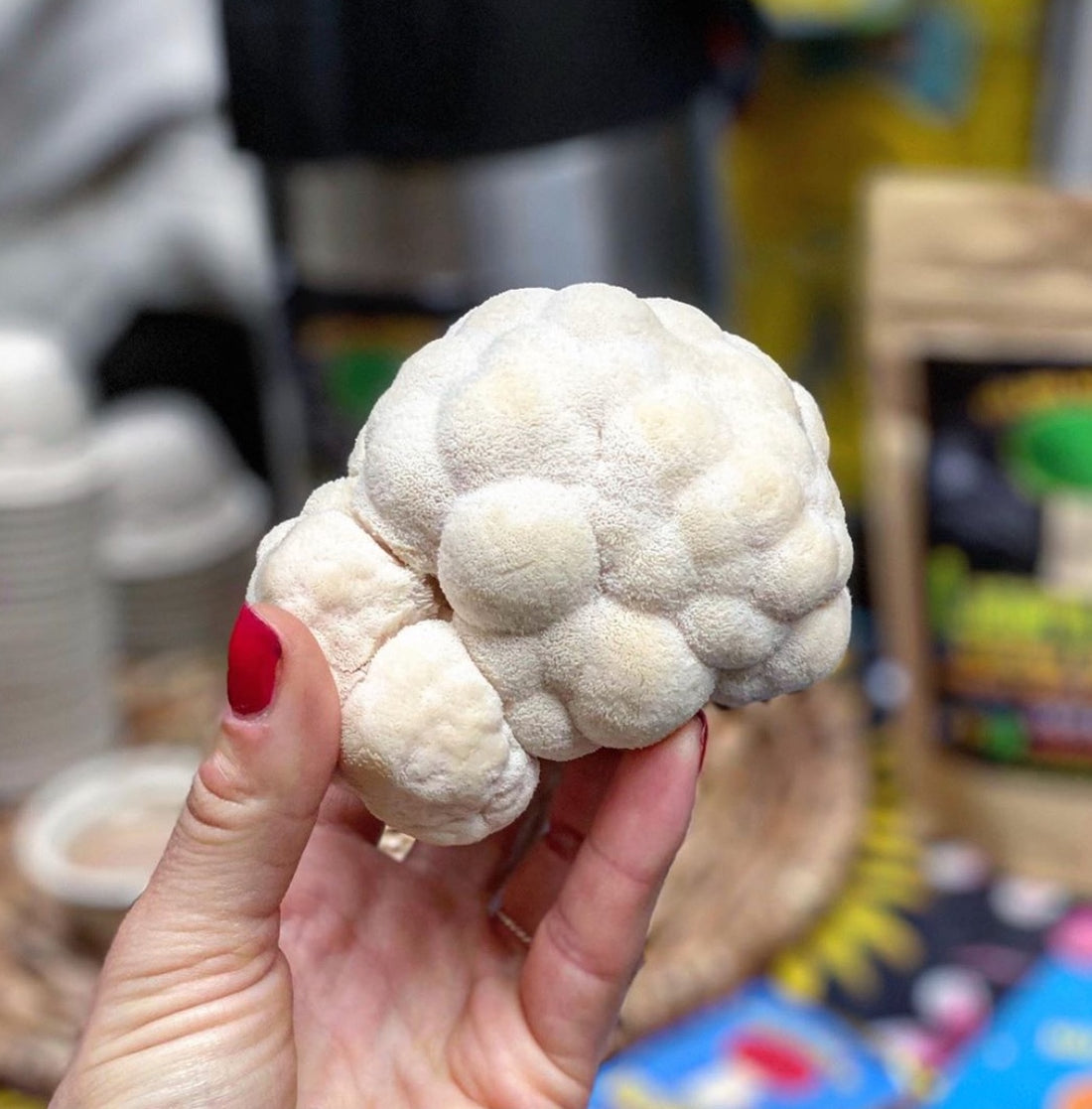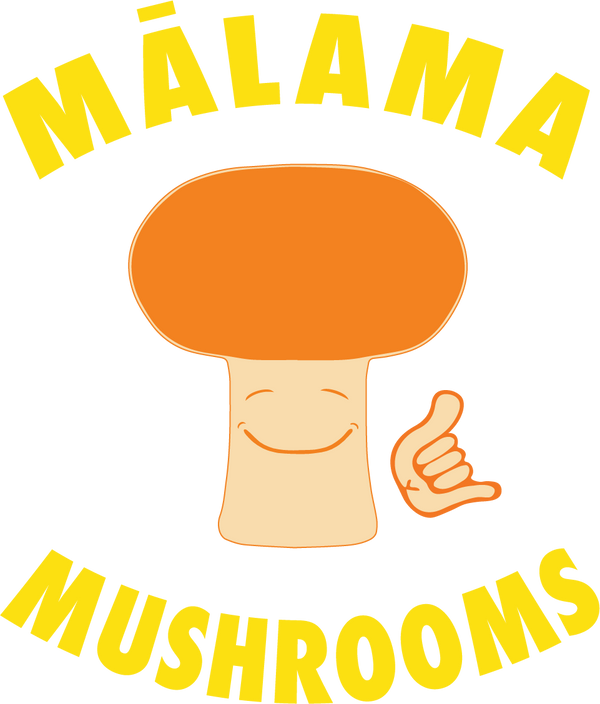
Scientific-Study Review of the Lion's Mane mushroom
Share

It’s no wonder Lion’s Mane is good for the brain. Just look at how closely it resembles one! But it’s not just about looks, there are at least 40 scientific studies backing the fung-tional properties of this nootropic-wonder-mushroom. In this post, we explore just three of our favorite studies done with Lion’s Mane (Hericium erinaceus).
Study One: A Clinical Trial on Cognitive Enhancement of Lion’s Mane mushroom

The Study
A 2009 study took a group of 50 to 80 year old women and men with mild cognitive impairment in order to study the effects of ingesting Lion’s Mane. The group of subjects were randomized into two 15-person groups. One group was given four tablets of 250mg of Lions Mane three times per day (3 grams total) while the other group was given a placebo, or non-active, tablet. Neither the group nor the researchers were told which group was taking the active and non-active tablets to ensure there was no bias in data collection (this is what is called a double-blind trial design). Individuals ingested their tablets daily for 16 weeks and were evaluated on their cognitive function at set intervals. The subjects were also studied for an additional 4 weeks after the termination of tablet ingestion period to see if any significant improvements ceased with the end of the ingestion.
The Test
The subjects all had two weeks of preliminary examination to provide a baseline for their cognitive function, which was determined using the Revised Hasegawa Dementia Scale (HDS-R). The HDS-R is a question-and-answer based test that starts as simple as asking age and the day or year, but quickly ramps up to more challenging tasks such as recounting digits presented by tester in reverse order, recalling the name of objects in a specific order presented by the tester, and other challenging memory tests.
The Results
At weeks 8, 12, and 16 of the trial, the Lion’s Mane ingesting groups had “significantly increased scores on cognitive function scale compared with the placebo group”. Even more, each testing week, the test scores increased with each passing week showing the Lion’s Mane had an increasing effect over time! The test results for the four weeks following termination of the ingestion showed that without ingesting the Lion’s Mane, the improvements had significantly dwindled.
Conclusion
Even in amounts as little as 3 grams per day, which is about 1-2 teaspoons of powder, subjects had significant increases in their cognitive function. Even more interestingly, the effect increased more over time. It’s unclear just how soon the effects began, as the first measurement was done at 8 weeks, about halfway through the study. Also, it is unclear = whether or not it was an extract of lion’s mane or just dried powder, but either way, really well-done research and one of the best examples we have of the benefits of the lion’s mane mushroom.

Study Two: Reduction of Depression and Anxiety with Lion’s Mane Mushroom

The Study
A 2010 study aiming to find lion’s mane’s effects on menopause, depression, & sleep quality. They used a similar design utilizing a double-blind and placebo-controlled format. This study pulled from a subject group of 60 females of varying ages. Half of the subjects were randomly assigned to consume an active form of Lion’s Mane and the other half a non-active placebo form, both for four weeks. The lion’s mane was pressed into cookies each containing 500 mg, or .5 grams, of the fruiting-body. Subjects consumed four cookies a day (2 grams of fruiting-body total.)
The Test
This study wanted to find out the effect of Lion’s Mane on menopause, depression, sleep quality and indefinite complaints. Tests were measured utilizing the Kupperman Menopausal Index (KMI), the Center for Epidemiologic Studies Depression Scale (CES-D), the Pittsburgh Sleep Quality Index (PSQI), and the Indefinite Complaints Index (ICI).
The Results
The results showed the group ingesting the Lion’s Mane had significantly lower scores in the depression and indefinite complaints tests and that feelings or irritation and anxiety tended to be lower than the placebo group. Sleep quality tended to improve, but was reported to not be statistically significant.'

Conclusion
This study used 33% less lion’s mane than the first study and still had significant results. They measured a significant amount of variables with different indexes/scales from ranging from depression, to sleep, to menopausal and complaints! This is much more robust then one single test as in the first study; the completion of a scientific study is a lot of work so the more data one can collect the better! The study was a lot shorter compared to the first (4 weeks vs. 16 weeks of consumption) but results were found so it was apparently adequate!
Study Link:
Reduction Of Depression And Anxiety By 4 Weeks Hericium Erinaceus Intake

Study Three: Neurogenerative of the Lion’s Mane Mushroom in Nerve Injury
The Study
This study in 2012 set out to see how Lion’s mane can repair damaged nerves. This study is similar to the first studies, as there is a group given an active form of Lion’s Mane and a second group that is not. However, it differs from the first two studies in that it was not conducted on humans, but rather rats.
The Test
In this study, subjects had gluteal nerve damage during surgery. One group was given a water extract of Lion’s Mane daily in amounts of 10 to 20 mL per kg bodyweight. The other group was given doses of vitamin B12 which has been used in the treatment of peripheral nerve disorders. Neuronal biomarkers were measured and recorded before and after administration as well as observable walking capabilities.
The Results
Subjects ingesting the Lion’s Mane had positive results both from an observable point of view but also on a genetic level. Subjects in the Lion’s Mane treated group experienced a restoration of a normal walking track and toe-spreading function, indicating the return of hind limb function earlier in the treated group than in the negative control ingesting only vitamin B12.
On the genetic level, the group ingesting Lion’s Mane had an immediate early gene expression and an enhanced local axonal protein synthesis in the distal segments involved in mediating neurite outgrowth. The Lion’s Mane group experienced regeneration of axons and nerve restoration in the muscle of rats better than in the negative controlled vitamin B12 group.
Conclusion
The fact that immediate gene expression and protein synthesis was observed in the points of injury really stands out. Especially when compared to that of Vitamin B12, which has been used in the treatment of nerve disorders. That said, let’s address the elephants, or should I say rodents, in the room. One is the fact that the subjects are rats, not humans.
However, both being mammals, we share around 90% of our DNA with rats and even though the chances of a drug affecting humans and rats the same are controversial, pharmacological and toxicity studies still rely on animal studies for validity and the fact that we already seen positive results in human trials of Lion’s Mane is a positive indicator of the congruency.
The other elephant in the room is the amount of lion’s mane extract dosed per day. The test says 10-20 mL of aqueous extract per kg per day. However, it isn’t clear what the concentration of the dose is. Also, taking the average of 15 mL per kg and adding context is to a 180 lb. individual would make it about 1200 mL, or 1.2 liters per day. It is worth pointing out that this is a significant, though not absurd, amount of liquid.
Study Link:



4 comments
Aloha Donald, please look again after each Conclusion. There is a URL link that says “Study Link”. Mahalo
Please include the addresses, url’s, or other ways of seeing the actual studies that are cited here.
Aloha Leilani! It would be hard to grow on stumps / logs. That’s more a shiitake or reishi cultivation method, however the sawdust of both those should work!
Mush Love!
Have you had any success with growing Lion’s Mane on local wood logs or stumps? Say Keawi or Mango, Monkeypod or Silk Oak…Thanks!